This beautiful historic house in Much Marcle, Herefordshire, is a living monument to much of England’s history. Attractions include heirlooms of Anne Boleyn, the haunted bed chamber prepared for Queen Mary Tudor, the panelled Music Room adorned with its English Renaissance frieze, paintings by Gainsborough, Van Dyke, Peter Lely and Goya, and the fascinating story of Hetty Walwyn.
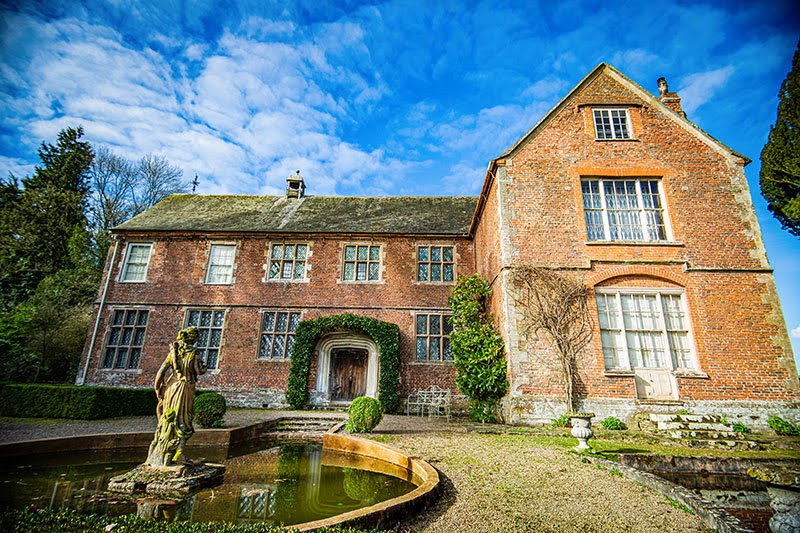
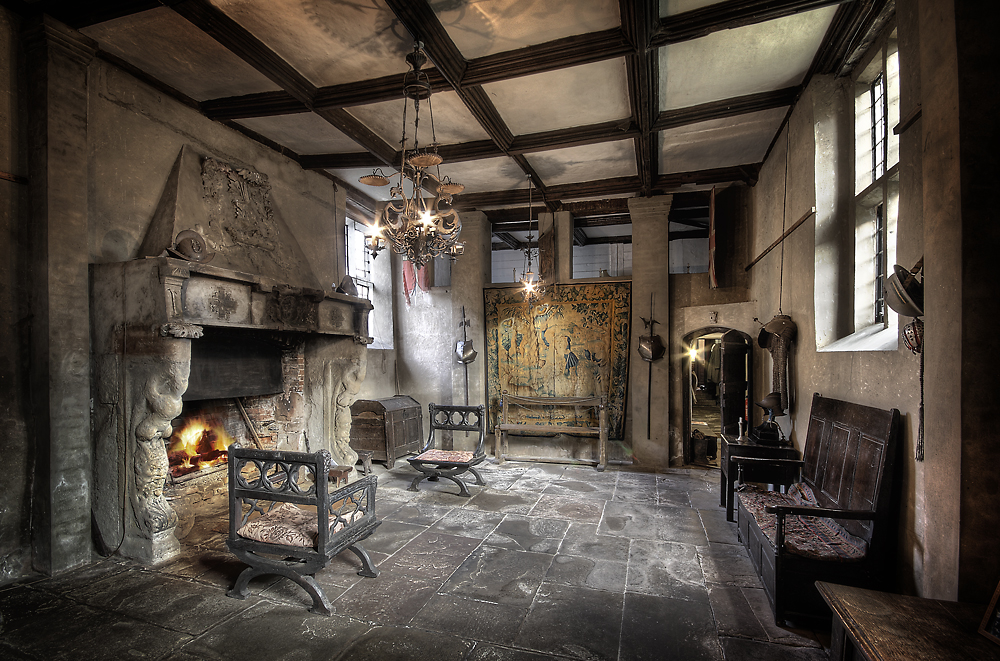
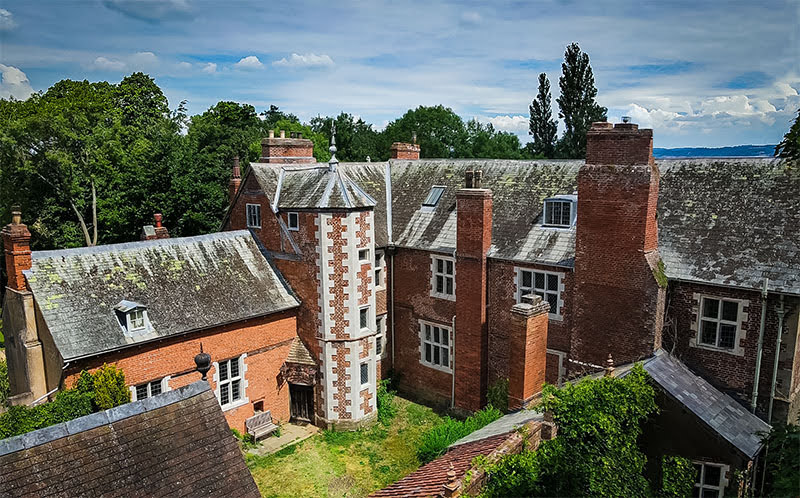
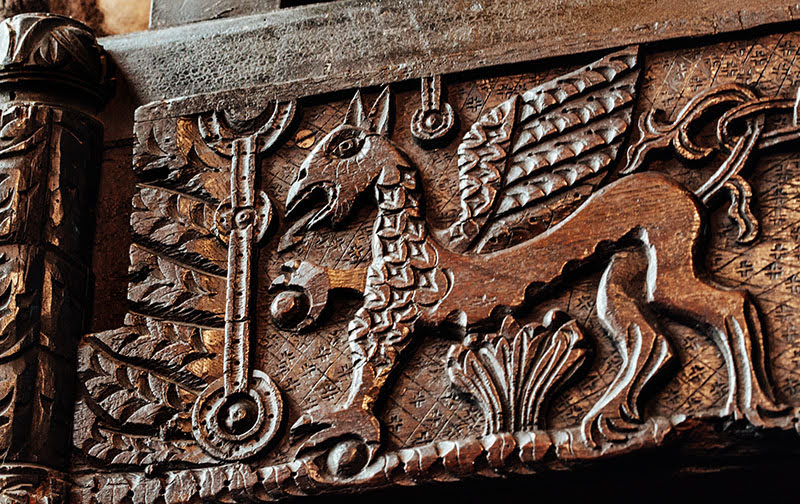

Hellens’ story connects through its residents with many key events in England’s history:
- Earl Harold Godwinson, later King Harold II, Hellens’ first recorded owner
- The de Balun family who witnessed the signing of the Magna Carta
- Isolde Mortimer, whose brother Roger Mortimer ordered the murder of the defeated King Edward II and the delivery of the Great Seal of England to Isabella of France and the future King Edward III at Hellens
- James Audley, hero of the Froissart Chronicles and boon companion to Edward the Black Prince
- Richard Walwyn who prepared the bed chamber at Hellens for a visit from Queen Mary Tudor
- The monk, killed by Roundheads during the Civil War who were searching the house for its Catholic owner
- Hetty Walwyn, imprisoned by her mother after a failed elopement
- Charles Walwyn Radcliffe Cooke, known as the MP for Cider, he encouraged Hugh Weston to develop his cider business
- Helena Gleichen, painter and great-niece of Queen Victoria, who stored paintings from the Tate Gallery in the Stone Hall at Hellens during the second world war
- Malcolm Munthe (son of Hilda Pennington Mellor and Axel Munthe, author of The Story of San Michele), who purchased Hellens in 1943
- The current owner, the Pennington Mellor Munthe Charity Trust (PMMCT), which was set up by Malcolm in 1981
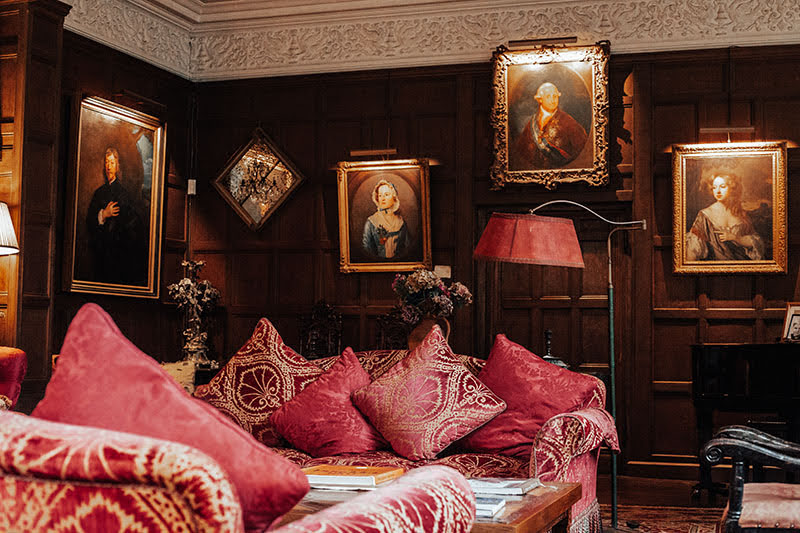
The paintings at Hellens are a fascinating amalgam of several different collections, principally the Wharton Collection, formed chiefly through inheritance and marriage, which chart the shifting political, social and economic fortunes of the families whose history they record. The highlights range from impressive full-lengths by Sir Anthony van Dyck (1599-1641) to tiny miniatures by Hilliard and Samuel Cooper, as well as fine examples by Hogarth and Gainsborough. Numerous portraits by lesser-known artists also have their fascination, offering vivid glimpses into the past, and the stories behind the faces.
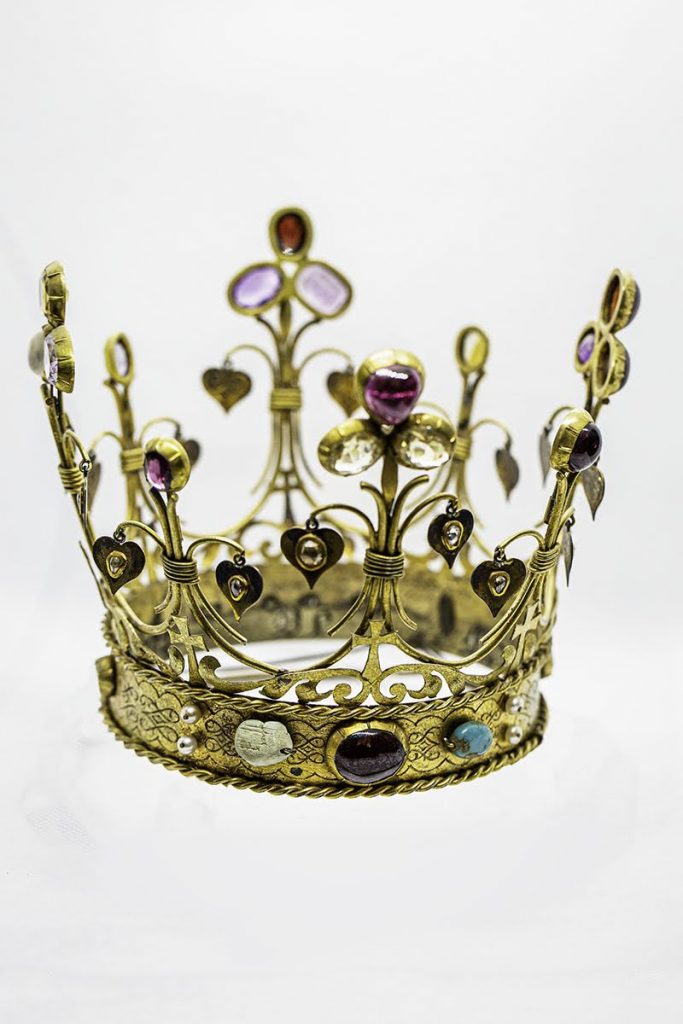
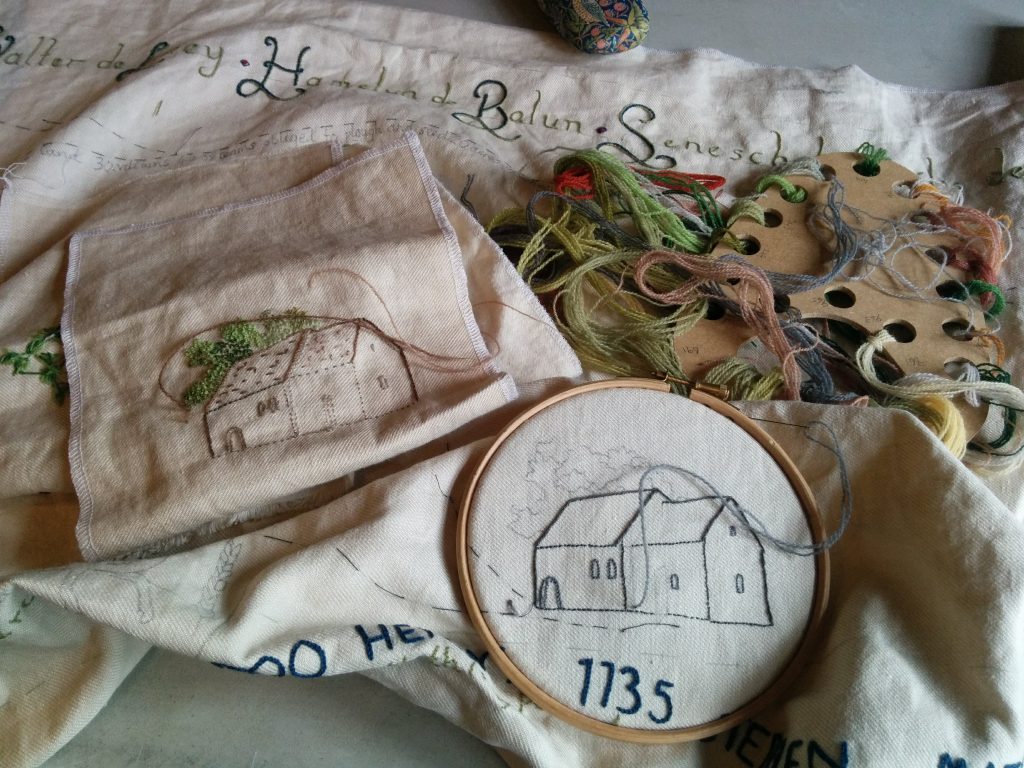


Since 1999, the Arts Society (formerly NADFAS) Heritage Volunteer Conservation group has been dedicated to caring for and conserving the textiles at Hellens. Their meticulous work, involving thousands of tiny couching stitches, is evident throughout the manor house.
Initial conservation efforts encompassed the cleaning and conservation of; Zerafa and the green embroidered valance in Mary Tudor’s room; a Renaissance fragment located in the dining room; a priest’s chasuble; the large stone hall hanging; and the bed hangings in the Cordova room. Beyond conservation, the group has also designed and created several unique new textiles for Hellens.
2001 saw the first new work created by the group. Gail Harley made a copy of the costumes seen in the 1612 portraits of Nicholas and Jane Halswell that hang in the White dining room. Other children’s costumes were made for dressing up and these are still used today when school groups visit Hellens.
The first major group project, completed in 2011, was the replacement of the worn silk curtains in the Music Room with hand-embroidered Crewel curtains. This “tree of life” design, incorporating Hellens’ crests and imagery, features unique motifs contributed by each group member, such as dragonflies, bumblebees, hedgehogs, and butterflies. These curtains required over 4741 hours to create.
In spring 2017, the group completed needlepoint seat covers for the White Dining Room chairs, drawing inspiration from the room’s Tudor panelling and a 17th-century herbal found in Hetty’s room. More recent endeavors include the conservation of an 18th-century French folding screen that can be seen in the Music Room, the cleaning and re-braiding of six velvet East Hall chairs, numerous repairs to cushions and cloth, the re-upholstery of an 18th-century stool and a replacement pair of curtains for the White Dining Room.
In 2017, the group embarked on their most ambitious undertaking: “Hellens, a history in stitches,” a large hanging frieze depicting the history of Hellens from before 1066 to the present day. Designed by Ann Hay, Sue Pemberton, Kat Terry, and Sally Ziesler, this crewelwork tapestry humorously and dramatically portrays Hellens’ history, beginning with nuns and concluding with the stitchers themselves. Scenes include Queen Isabella with the Great Seal, animals fleeing ‘the slip’ earthquake, Roundhead pikemen murdering a priest, the Coronation Ball for Queen Elizabeth II, cider making, Mary Tudor knighting Richard Walwyn and Dame Ethel Smyth bathing amidst WWII-era Tate Gallery paintings. Owners and English royalty are stitched along the top and bottom, while trees from the grounds and the Marcle Ridge visually link the various scenes.
“A History in Stitches” is scheduled to open to the public in April 2026.

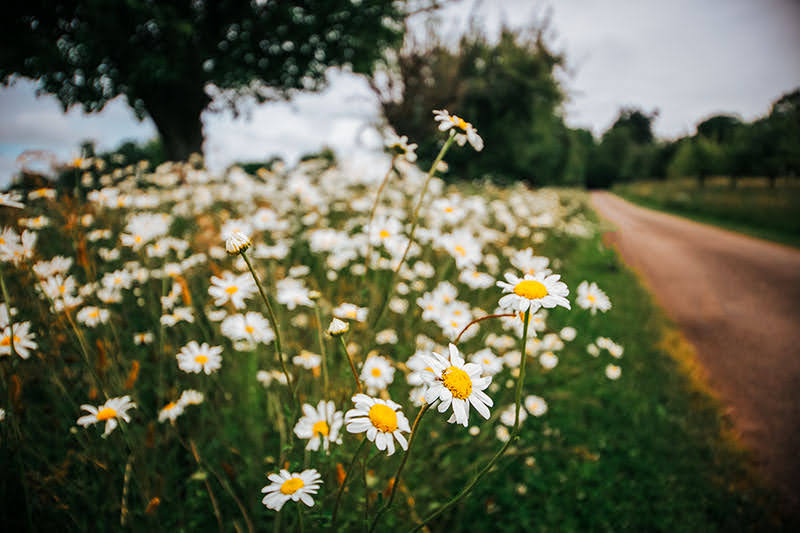

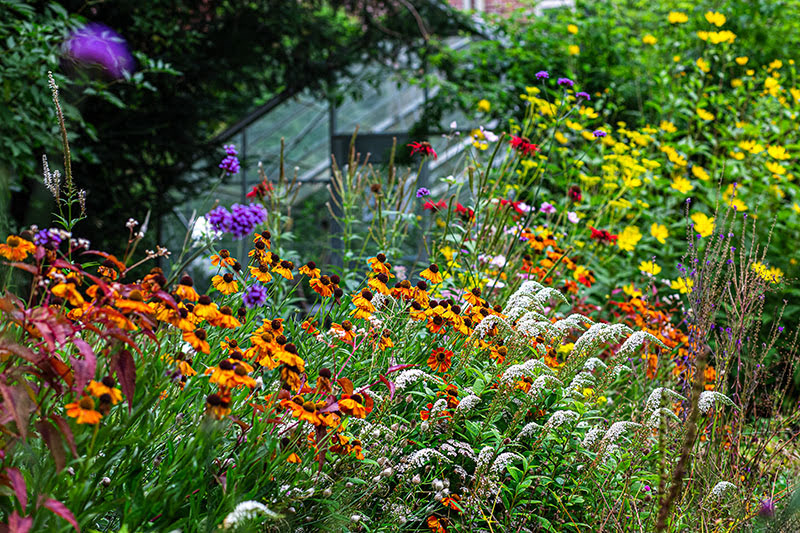
Designed along Tudor and Jacobean lines to reflect the house’s history, the gardens are dog friendly and include a yew labyrinth, a rare octagonal dovecote, a physic garden, a knot garden and wonderful views to the Malvern Hills. The grounds cover 150 acres of ancient SSSI woodland and wild flower meadows, with trees ranging from Wellingtonias and Blue Atlas Cedars to many rare varieties of fruit trees. In spring the woods are full of wild flowers – daffodils, orchids, anemones and bluebells.
Garden Map
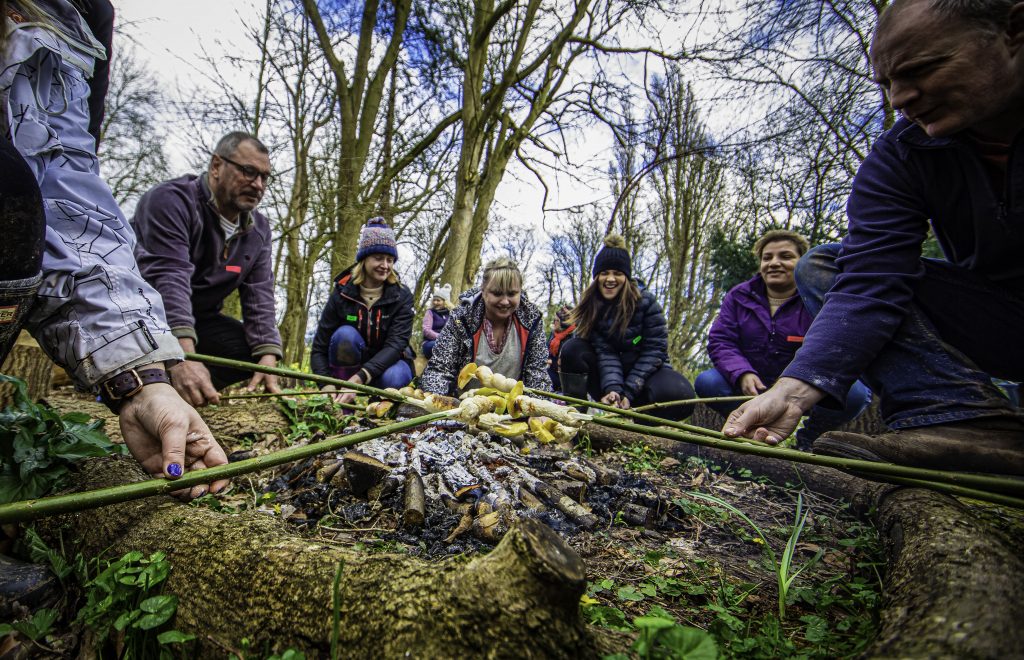
Making use of our ancient woodland, wild meadows and beautiful surroundings to help young people reconnect with themselves, others and the natural environment, Back To The Wild exists to:
-
Aid personal development for young people.
-
Facilitate better understanding of nature and our part in it.
-
Enhance positive mental and physical health through outdoor experiences
-
Share and learn new fundamental life-skills
-
Promote equality, cooperation, collaboration and harmony
-
Celebrate ancient and traditional rural skills and knowledge
-
Improve humanity’s relationship to the planet and promote sustainable living
The current climate emergency has highlighted the biodiversity crisis that we are presently experiencing, and those ways in which we have put the future at stake for our immediate descendants. (Adam Munthe – October 2021)
Hellens has started to implement plans to make a small but genuine commitment to the regeneration of the land in its care, and we are working with nature to improve things for wildlife whilst also maintaining an incredibly valuable resource for our local community.
In Autumn 2021 we began a series of consultations with local conservationists, and land management experts to form a plan for a careful reworking of our landscape. Now, nearly four years on, we are really beginning to see the benefits brought by the changes we have made.
Set in the rural landscape of Herefordshire Hellens is a much–loved Tudor/Jacobean home with an incredible tapestry of stories, characters, art, furniture, grounds and gardens. Open for guided tours from April to October along with our tearoom, Hellens is also a venue for educational and cultural events all year round.
At Hellens we work to create an environment where everyone who lives, works and visits us is encouraged to be creative, curious and engaged. In all our activities – cultural, educational or just fun we strive to both celebrate and respect the legacy of this beautiful home of ours, while looking to the future in ways that are green and collaborative.
The first owner of the Hellens estate that we can find was Harold Godwinson in 1057, but with the loss of his life and the crown in 1066, the house moved into Norman hands, and found a curious place on the edge of history about which there is more to tell!
My grandmother, related to various previous owners, fell in love with the site, and started the gardens. My parents were passionate to develop Hellens’ possibilities as a place of beauty and serenity. I have dreamt of growing a community of likeminded souls here, excited by what the arts, land regeneration, and our eccentric collections can give to others. My children are bursting with new ideas (about which sometimes I’m nervous), and as for the grandchildren, God knows what awaits us all!
Adam Munthe
Chairman of the PMMCT
(Hellens is in the ownership of the PMMCT, the Pennington Mellor Munthe Charity Trust)
Hellens is pleased to announce building work on our new art gallery is scheduled to start towards the end of 2025.


Hooligan at a Concert – Hellensmusic May 2025
At the interval of a fantastic concert, I found myself chatting with Adam Munthe, chair of the Hellensmusic Festival. With a glint in his eye, he said I looked “a bit of a hooligan.”
That word—hooligan—stuck with me. Not as a slur, but as a badge of honour: a symbol of spirited rebellion in a space often accused of solemnity the church, and tradition with regard to the shires. At Hellensmusic, it felt exactly right.
This remarkable festival takes place each May in and around Hellens Manor in Herefordshire. Its wider mission is to “collaborate outside the concert set circuit and explore new ideas—to provide a platform for talented music students, learn from leading experts, and bring great music to this corner of England.” As Adam explained, they’ve yet to persuade the national press to take notice. Whether due to metropolitan snobbery or a blind spot for the shires, it’s a loss. In the absence of a professional reviewer, I’ve taken up the role—hooligan critic, if you will.
Last night’s concert was held at St Bartholomew’s Church and titled Solo Bach to Argentine Tangos. It opened with Battalia ‘Der Mars’ by Heinrich Biber, the Bohemian-Austrian composer known for his early use of polytonality and experimental techniques. This “battle” march featured violin and cello in dialogue, the cello thudding like a drum—leading us into the concert not quietly, but in formation.
The performers moved among the audience. Maya Iwabuchi, one of the festival’s artistic directors, entered down the central nave playing her violin. This intimacy set the tone: a dismantling of formality.
The program was eclectic. After a stunning prelude from Bach’s Cello Suite No. 3, we heard R.Clarke’s Prelude for Viola and Clarinet—an arresting musical conversation, spare and intimate.
But nothing was more unexpected than Gareth Lubbe’s improvised solo. Beginning behind the altar, Lubbe—a polyphonic singer and viola player—wove overtone singing into his playing. His voice reverberated under the Moorish-style arch of the church. In one moment, we were in the world of Gregorian chant; in the next, transported to Syria, Lebanon, or some imagined space between. It was the kind of genre-defying, spiritual disruption that would make classical purists shift in their pews—and that’s precisely why it belonged here.
The first half closed with Chopin’s Mazurkas, played with delicate expressiveness by Christian Blackshaw. They were wistful, lyrical, and quietly rebellious in their own way—a fitting close before the storm of the second half.
Then came Omar Massa! Massa plays the bandoneon, a close cousin to the accordion but without register switches, making his expressiveness all the more impressive. The ensemble opened with Astor Piazzolla, whose Muerte del Ángel felt like a Buster Keaton film—angular, surprising, sharp. In Tangata, the tone shifted to something more like a Sergio Leone gunslinger pacing into a dusty plaza.
But Massa is no mere interpreter. His own compositions were highlights, especially Buenos Aires Ritual, a pulsing, percussive piece layered with tension and tenderness—a kind of tango noir, full of cinematic longing. In his black polo neck, Massa had something of the secret agent about him, as if summoned for one last job, mission impossible? His final piece, Tango Legacy, began like a train—powerful and purposeful—but this was no straightforward journey. There were detours, meditations, and silences, as if the traveller had drifted into memory, gazing out the window at a passing dreamscape.
By the time we stepped outside, it had grown cold. But the warmth created within the church lingered: from the music, the performers, the sense of communion. The pieces we were invited to engage with weren’t conventionally “pretty”—and that made them more beautiful still.
So, back to Adam’s comment. “Hooligan” seemed exactly right. I think he meant it affectionately, in the spirit of Norman Manea’s memoir The Hooligan’s Return, where the hooligan becomes a figure of dissent: the misfit artist who refuses to conform. That spirit ran through this concert and through the broader project of Hellensmusic.
As I left, I spoke with some of the young musicians attending as part of the festival’s masterclass program. Over seven days, they work intensively with world-class performers, culminating in a chance to play for an audience alongside their tutors. Here again, the spirit of positive hooliganism: of unsettling the idea that classical music belongs only to the old, the comfortable, or the metropolitan elite.
What we saw here wasn’t just a concert—it was a quiet uprising. Hellensmusic isn’t afraid to challenge the status quo. And I, proudly, was briefly its hooligan-in-residence.
Dr Jason Todd
